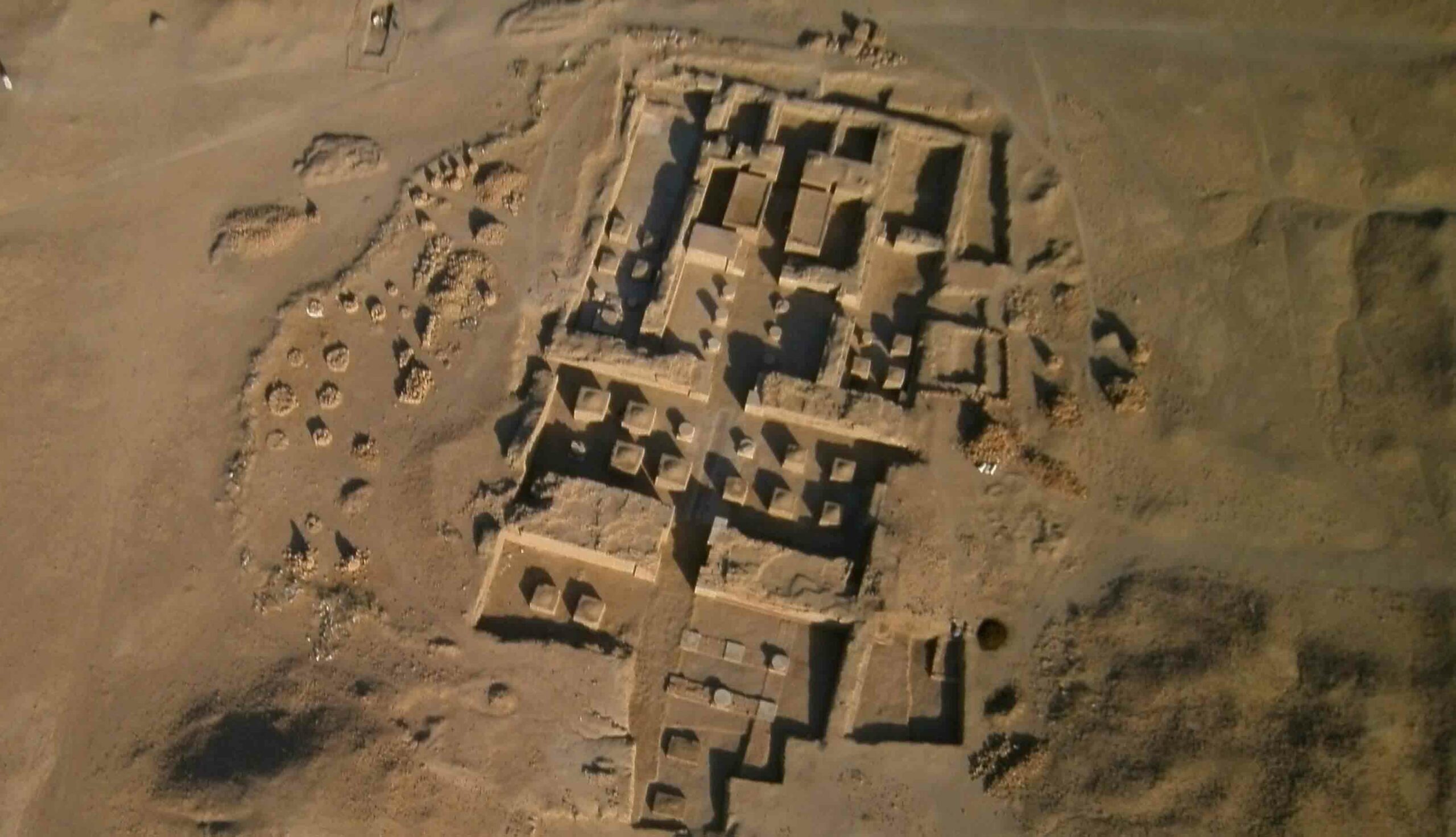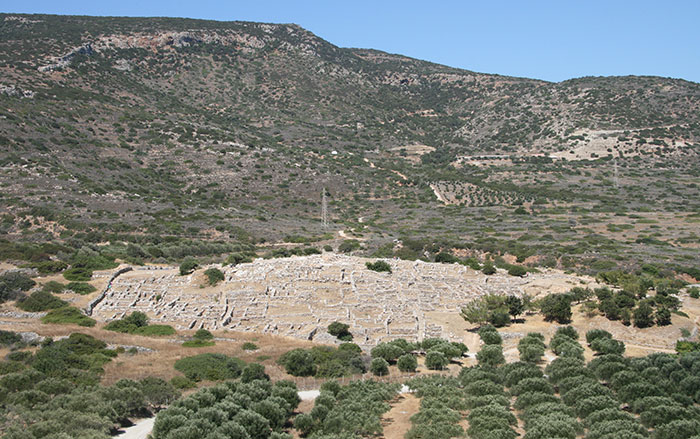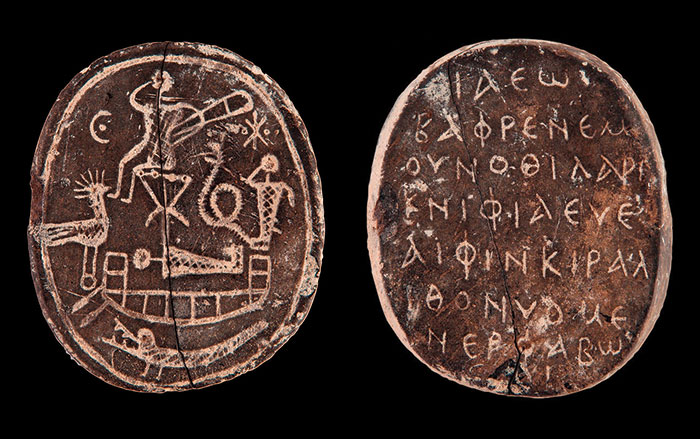
BELIZE

BELIZE: The Great Blue Hole, a limestone sinkhole 40 miles offshore, is widely recognized as one of the world’s great scuba destinations. The sediment in and around it also provides information about past climate. The concentration of titanium and the ratio of titanium to aluminum rise and fall with rainfall, so by analyzing sediment cores, earth scientists have determined that there were severe droughts between A.D. 800 and 900, and again between 1000 and 1100. The two periods correspond with the declines of the Terminal Classic Maya cities and Chichén Itzá, respectively.

SPAIN

SPAIN: In a deep deposit at El Mirador Cave—spanning the Early Neolithic to the Bronze Age (7,200 to 3,100 years ago)—archaeologists have found evidence of human consumption of dogs, wild cats, badgers, and foxes. The carnivore bones appear to have been butchered, broken, cooked, and gnawed by humans. Consumption of dog meat appears sporadically but repeatedly, while bones of the other carnivore species are less frequent. Researchers suspect they might have been accidentally hunted, but also may have provided extra protein in times of scarcity.—Samir S. Patel

FRANCE

FRANCE: Using a novel method—radiocarbon dating of trapped iron carbide flakes—metallographers and archaeologists have confirmed that metal reinforcements used in Gothic cathedrals were not later additions, but rather were part of the initial construction process. Samples taken from cathedrals in Bourges and Beauvais reveal that metal tie-rods and chains were incorporated either during the initial design phase or as builders were working, the latter suggesting that cathedral building sites were like laboratories for new building techniques.—Samir S. Patel
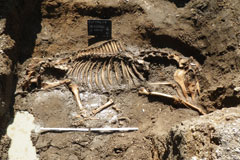
ENGLAND

ENGLAND: Excavations at the new National Heritage Centre for Horseracing and Sporting Art at King Charles II Palace in Suffolk have revealed the remains of an unknown horse in a location that suggests it had been a prized animal. Researchers initially suspected that the bones belong to racing legend Doctor Syntax, who won 36 races between 1814 and 1823 and was put down in 1838. The teeth suggest the horse died at a younger age than Doctor Syntax had, but the hope is that genetic testing will provide more details.—Samir S. Patel
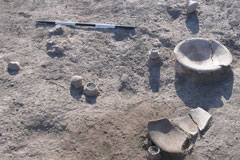
UKRAINE

UKRAINE: Excavation and geophysical tests have allowed archaeologists to get a better sense of what may be one of the largest structures in prehistoric Europe, at the site of Nebelivka, but many mysteries remain. Belonging to the Trypillia culture, dating to 5300 to 2700 B.C., the site includes 1,500 structures, including massive assembly houses, one nearly an acre in size. Interestingly, the artifacts found in the large houses closely resemble what was found in typical households, as if the mega-structures were treated like houses with extra-large dimensions.—Samir S. Patel
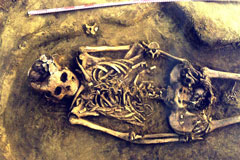
RUSSIA

RUSSIA: Death during childbirth was a common occurrence in the ancient world, but for a variety of reasons—cultural practices, lack of preservation—it is rarely observed directly in the archaeological record. Remains of a young woman from the Cis-Baikal site of Lokomotiv, dating to around 8,000 years ago, include fetal bones both within the abdominal region and just outside of it, evidence for two archaeological rarities: death during childbirth and twins. The remains suggest that the first child was in the dangerous breech position, and was partially born but unable to be removed.—Samir S. Patel
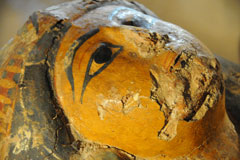
EGYPT

EGYPT: The Spanish mission to Luxor has discovered an intact coffin dating to the end of the New Kingdom (ca. 1550–1070 B.C.) and the beginning of the Third Intermediate Period (ca. 1070–712 B.C.). Hieroglyphs identify the occupant as a “Singer of Amun, King of the Gods,” a member of a class of women who played instruments, danced, and sang at religious ceremonies. The wooden coffin is unusual in its transitional style, and it is expected that cleaning and examination will reveal more about the identity of the mummy inside.—Samir S. Patel

CHINA

CHINA: Climate is a complex system, and sometimes a switch can just flip, changing things forever. Climatologists recently studied an arid area called the Hunshandake Sandy Lands of Inner Mongolia and found that the region suddenly changed around 4,000 years ago, when shifts in the monsoon and the flow of groundwater dried the area out in a matter of decades. What had been a land of lakes, grasslands, and forest—home to the Hongshan culture, which may have been China’s first kingdom—rapidly became desert, devastating the Hongshan.—Samir S. Patel
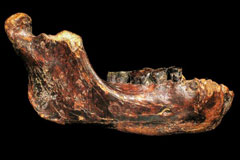
TAIWAN

TAIWAN: A fisherman recently pulled up a surprise catch: a prehistoric hominin jawbone. The robust bone could have belonged to Homo erectus or to the Denisovan people known from a cave site in Russia, but its particularly thick dentition suggests it could be different from both. That, and its surprisingly young age (around 190,000 years old), hint at an unexpected diversity of ancient human lineages around the periphery of Asia, even as attributes of modern humans began to emerge elsewhere.—Samir S. Patel

JAPAN

JAPAN: Legend has it that Kublai Khan’s grand fleet, dispatched to conquer Japan, was destroyed by “kamikaze,” or divinely sent typhoons, in A.D. 1274 and 1281. The story has long been believed to involve some level of exaggeration, but a recent study of sediments in Lake Daija, near the invasion site, suggests that the Mongol era certainly saw some devastating storms. The results show that marine floods (caused by storm surges or tsunamis) were more severe between A.D. 250 and 1600 than they are today, and that there were at least two major such events in the late 13th century.







